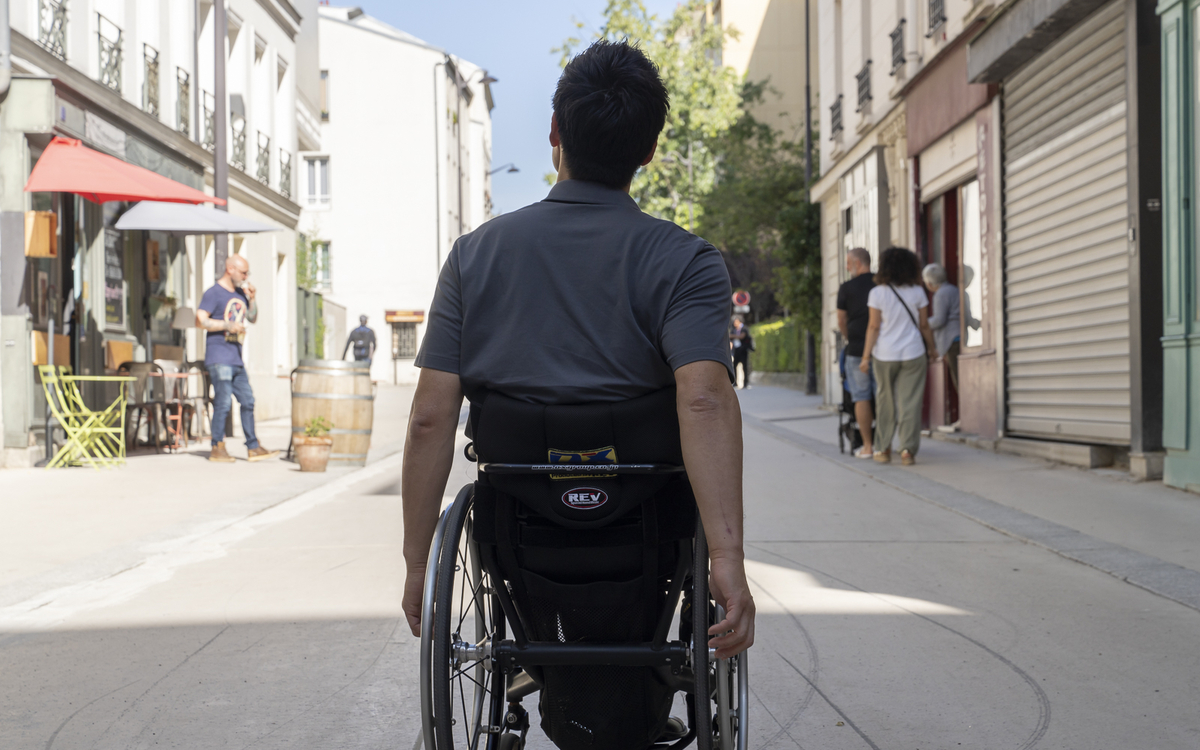Content
Cette page est aussi disponible en français
Enabling access to everyday services such as accommodation, sports, healthcare, shops, schools and culture for residents and tourists are the main objectives of the QHA (Quartiers hyper accessible–Enhanced accessibility neighborhood) scheme. The first QAA (Paris 10th) was inaugurated on July 4th.
Enhanced accessibility neighborhood (QHA) should enable access to services and amenities around Paris within a "quarter of an hour". This scheme reflects the city's ambition to move towards universal accessibility.
These districts are part of the legacy of the Olympic and Paralympic Games. These transformations will benefit Parisians over the long term.
List of facilities accessible to all by arrondissement
- Center
- 5
- 6
- 7
- 8
- 9
- 10
- 11
- 12
- 13
- 14
- 15
- 16
- 17
- 18
- 19
- 20
Click on a district in order to get information.
What is an "accessible" building or facility?
An establishment on which work has been carried out following an accessibility diagnosis to make it accessible to all, taking all disabilities into account. In terms of the legislation, this means a compliant public buildings, an accessible public building awaiting receipt of the requested certificate, or a public building that has obtained its certificate with a derogation or with reservations.
What facilities are part of the QHA scheme?
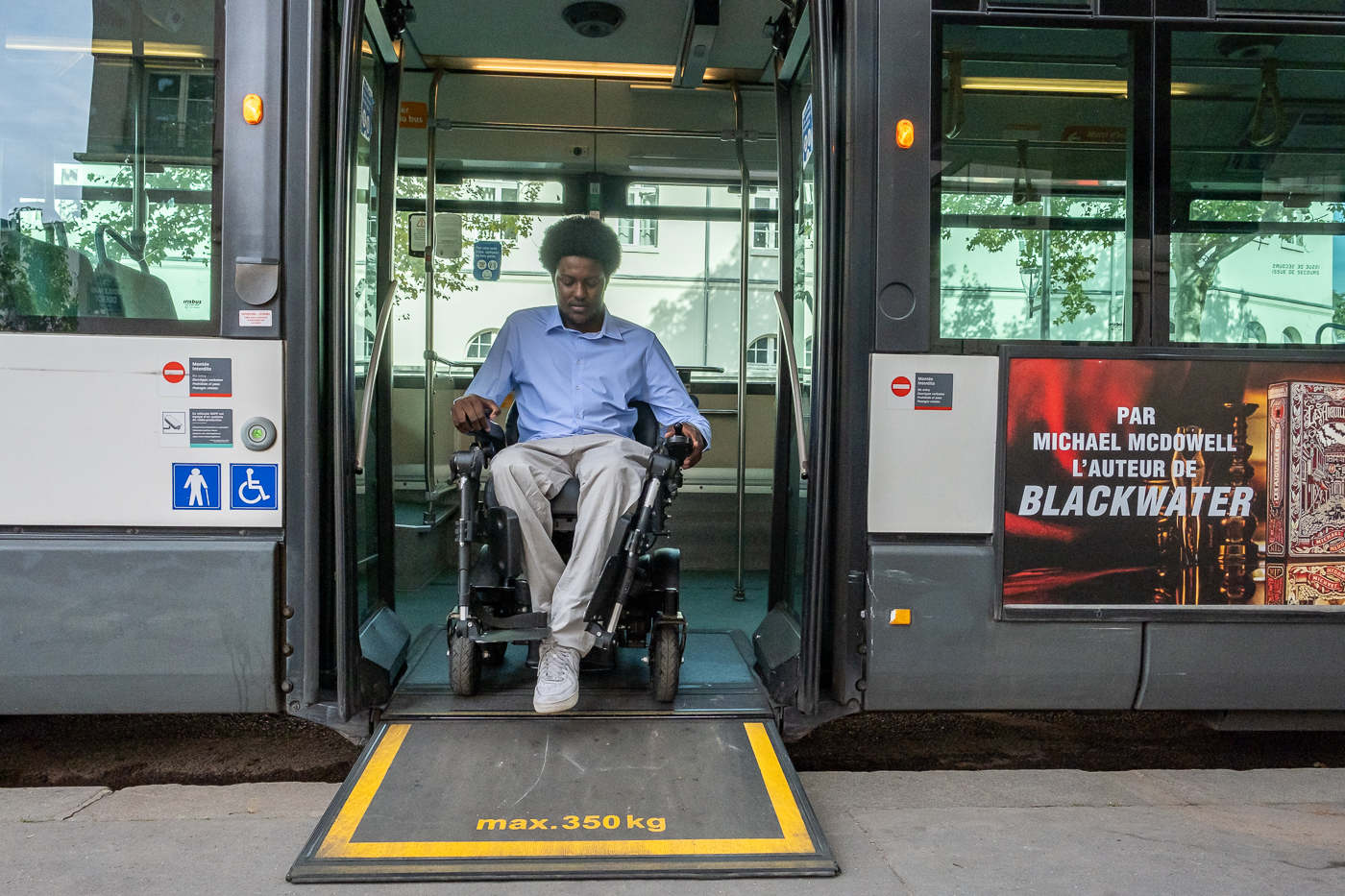
Enhanced accessibility neighborhoods with Souleymane Youssef
Credit
Clément Dorval / Ville de Paris
-
Removing unsuitable terrain and urban furniture
-
Improving pavements: repainting pedestrian crossings
-
Removing obstacles by lowering kerbs where necessary
-
Installation of sound guided modules for pedestrians at intersections
-
Creation of over 100 parking spaces for people with reduced mobility in total
-
Making all bus routes accessible. A bus line is considered accessible when all vehicles are equipped with a retractable boarding ramp, and when at least 70% of stops on the line are disable-friendly.
Work is also underway on innovations that can further improve accessibility. Accessibility to public buildings can always improve, making it easier for users to find their way around.
A path through each QHA
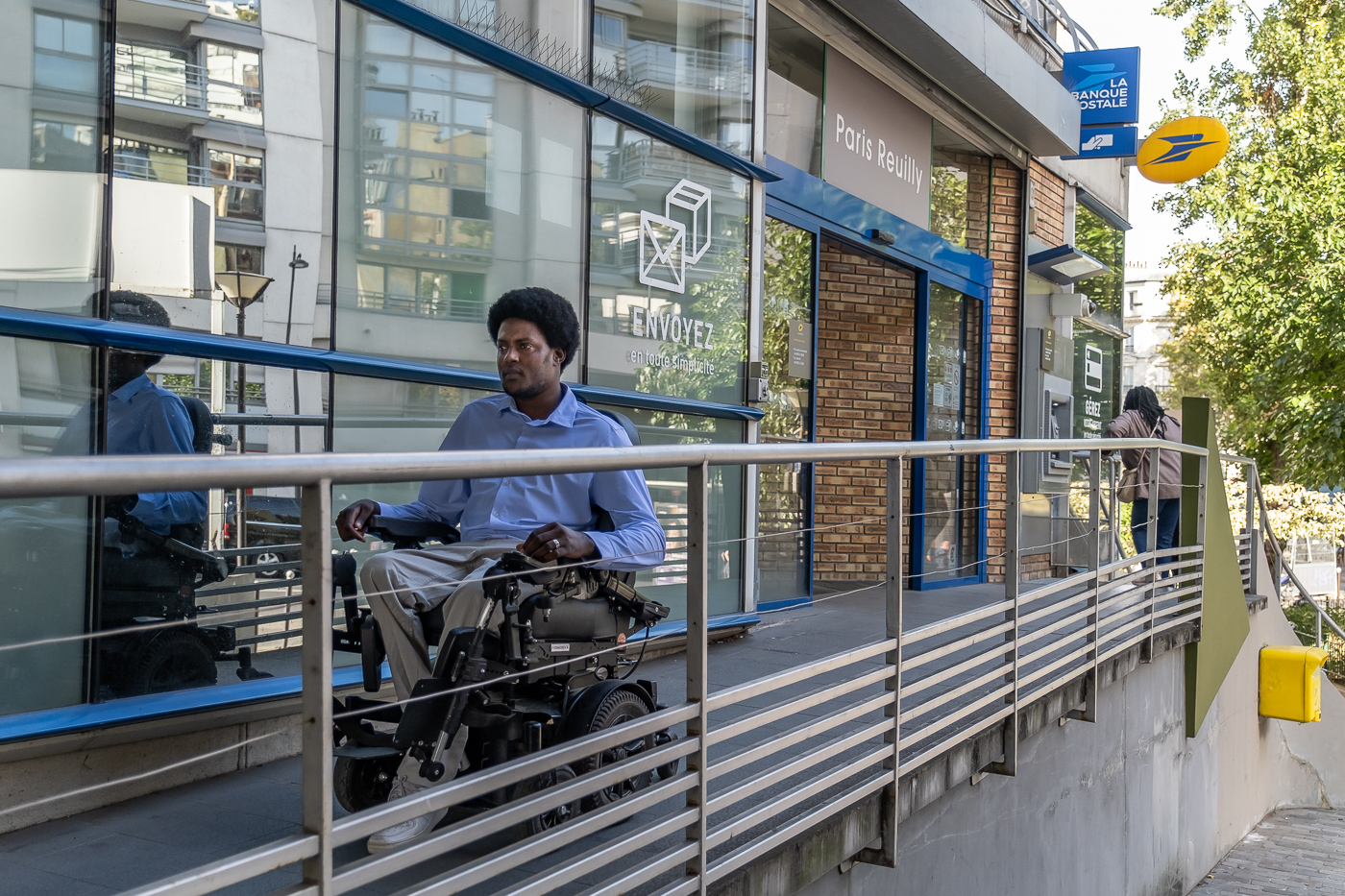
Enhanced accessibility districts with Souleymane Youssef
Credit
Clément Dorval / Ville de Paris
The aim is for Paris to have one QHA per arrondissement by 2024, for a total of 17.
Within each QHA, priority routes have been drawn up to allow access to various public and private facilities.
On each of these routes, there are at least eight public service buildings covering eight different services:
-
sports facilities,
-
health facilities,
-
libraries,
-
early childhood facilities,
-
cultural facilities,
-
school facilities,
-
leisure facilities,
-
green spaces.
In several QHAs, these itineraries may include a bus or pedestrian route outside the defined perimeter. This will provide access to any service not currently provided within the original area. For example, in the 10th arrondissement, the accessibility route leads to the Louxor cinema, outside of the local QHA zone.
Key numbers
- 17 priority routes between accessible municipal buildings
- A total surface area of 8.34 km² (8% of the surface area of Paris)
- 17 km of sidewalks
- Nearly 200 public service buildings open to the public within the QHA priority routes
- 289 bus stops in the QHA
- 502 disabled parking spaces within the QHA (11% of the Paris total).
- A total surface area of 8.34 km² (8% of the surface area of Paris)
- 17 km of sidewalks
- Nearly 200 public service buildings open to the public within the QHA priority routes
- 289 bus stops in the QHA
- 502 disabled parking spaces within the QHA (11% of the Paris total).
Promoting accessibility to shops
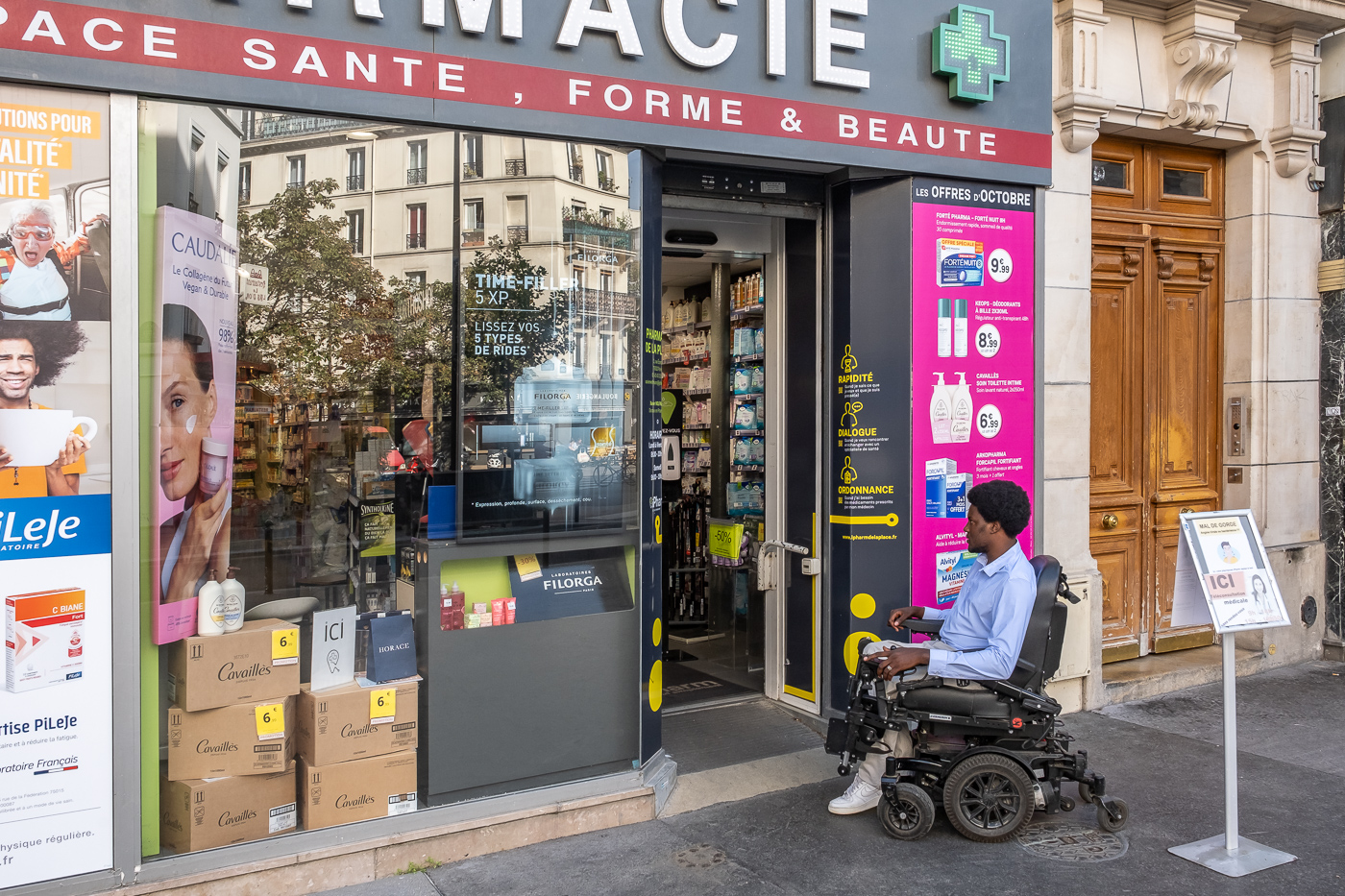
Enhanced accessibility districts with Souleymane Youssef
Credit
Clément Dorval / Ville de Paris
Improving disabled access to shops is also a priority. The City of Paris is encouraging retailers to improve accessibility. Accès Libre, the collaborative accessibility platform, allows retailers to log their shops as disability-friendly.
A practical guide summarizes best practices, including tactile paving on floors and stairs, access ramps, signage and staff training.
The City has hired a dozen "accessibility ambassadors" that will meet with shopkeepers to inform them of the sort of difficulties that disabled people often encounter. They will also work with them to identify ways of improving their businesses accessibility.
On June 15th last year, as part of Paris Disability Month, Paris Volunteers were also mobilized on the theme of accessibility. They toured the streets of enhanced accessibility neighborhoods to raise awareness among local retailers. Further planned action will raise accessibility awareness in shops.
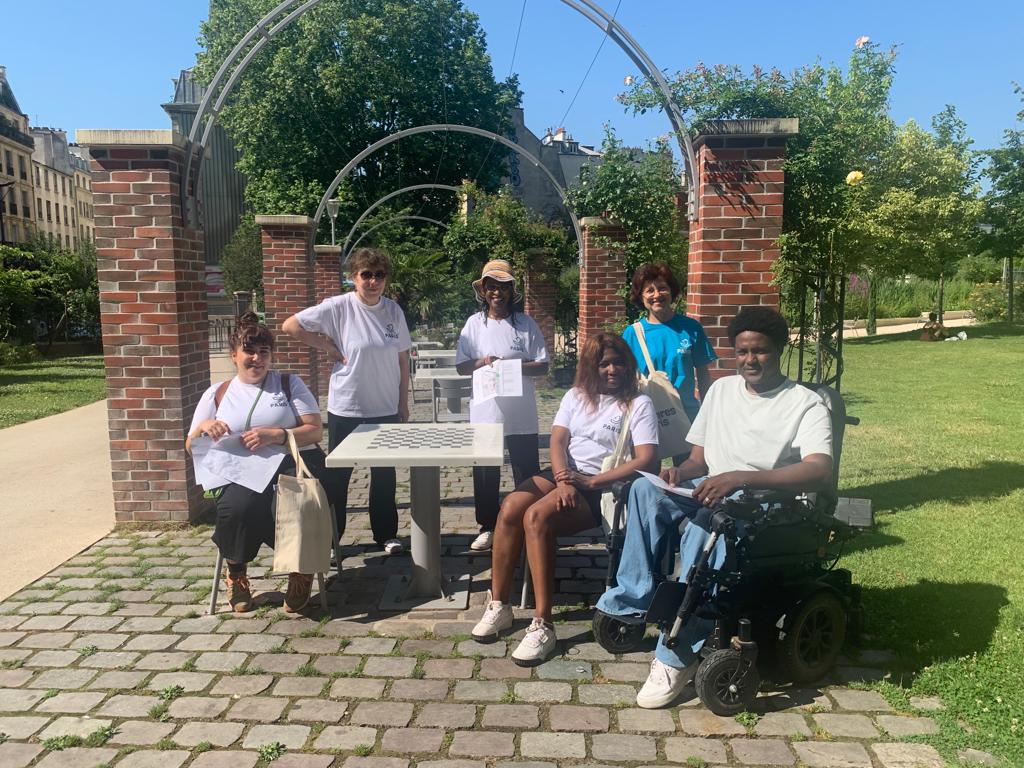
Accessibility Volunteers
Credit
Ville de Paris
Disabled access for all Paris Games venues
The city is working hand-in-hand with clubs and associations representing the disabled to improve access to competition venues and festivities sites, in particular for the installation of adapted signage.
All training sites are committed to improving accessibility. As for competition venues, they will have to be exemplary. This is already the case for the Arena de la Porte de la Chapelle, a showcase for innovative accessibility solutions, and the Pierre de Coubertin stadium (16th arrondissement).
Disabled volunteers also make up part of the Paris Volunteers team during the 2024 Games.
The Paris Info Jeux 2024 newsletter will deliver specific information to people with disabilities before, during and after the Olympic and Paralympic Games.
Further reading
-
Tools provided by the Tourist Office to facilitate access to tourist information parisjetaime.com
-
The Paris Games, accessibility accelerator
-
Paris 2024: for inclusive and accessible games
-
Increasingly accessible Parisian equipment
-
More accessible elections
-
100% accessible pilot districts
-
Day-to-day support from the MDPH
For information on Paris accessibility
Default Confirmation Text
Settings Text Html
Settings Text Html
We want to hear from you!
Was this information useful to you?
Please note: we cannot reply via this form (please do not include any personal information).
